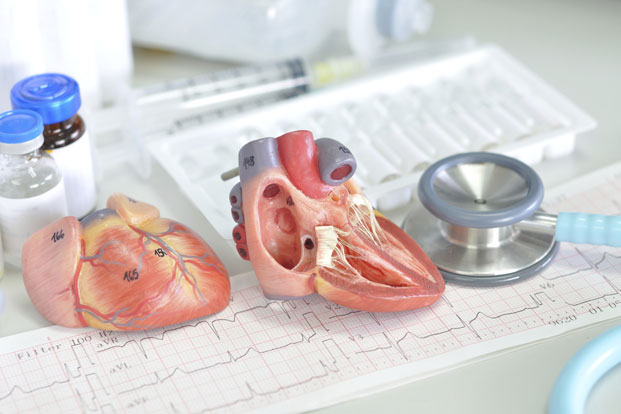Regenerative medicine is the practice of creating living organs and tissues that can repair or replace the body parts damaged by age, disease, congenital conditions or accidents. It’s sometimes considered akin to science fiction because at its farthest horizons, it holds out the promise of extending human lifespan far beyond its current parameters.
Regenerative medicine isn’t new — things like bone marrow transplants and organ transplants are decades old. But there is a new horizon for this specialized field, thanks to the research being done with stem cells, immunology, cell biology and other areas that are adding knowledge the field of regenerative medicine.
Beyond regeneration, there is the hope that laboratories someday may grow new hearts, lungs and other organs that can replace worn-out parts. This would be a huge development because organ donation lags far behind the list of those waiting for a donation to survive.
The History of Regenerative Medicine
The first instances of regenerative medicine started in the early 20th century, when the first successful replacements of corneas, bones and soft tissue occurred. This concept took wings in 1954 with the first successful kidney transplant, continuing into the 1960s with successful pancreas, liver and heart transplants.
The heart transplant was particularly ground-breaking, captivating the world as famed surgeon Dr. Christian Barnard of South Africa kept grocer Louis Washkansky alive for a then-miraculous eight days with a new heart.
Transplants continue to evolve in the 1980s, as the world witnessed the first successful lung transplants, double lung transplant, living liver donors, heart-lung transplants, and living donor lung transplants. This has evolved even further in the 2000s, as the first full face transplant occurred, and scientists contemplate even a brain transplant.
Although there is still much to discover, and existing therapies are limited, there is hope that a new world of medicine is in its earliest stages. Imagine a world where limbs can be regrown, dreaded diseases vanquished, and new organs grown and implanted.
Researchers believe it is possible, and the possibilities offer hope to the millions of people who suffer today with diseases and conditions that have few effective treatments.
There are medical professionals focused today on the three R’s of regenerative medicine. No, not readin’, ‘riting and rithmetic, as the old joke goes, but Rejuvenation, Replacement and Regeneration.
Rejuvenation focuses on finding ways to get specialized cells like the heart to be able to self-heal. The cells were once thought to be incapable of self-repair, but research is hoping to unlock the secrets that allow a cut to heal in a few days and apply it to other organs.
Replacement involves taking healthy cells from a donor and using them to replace ones that are no longer optimal. This can involve ways to circumvent the body’s immune system and the possibility of rejection and ways to entice more living donors.
Regeneration is the science fiction area of regenerative medicine, involving cells that can rejuvenate and restore organs and tissue function through cell therapy or regrowth.
Stem Cells Show Promise
Of all the therapies being researched, none offers the nearly infinite potential of stem cells. These are cells that have the ability to change into different types of cells, becoming new brain, lung, skin and heart cells, among other body parts. The process by which that is achieved is called differentiation, and it is the focus of billions of dollars in medical research because it can unlock the potential of expanding life far beyond current parameters as new clinical treatments are developed.
The science is not without controversy. There are several types of stem cells, but the most common are those derived from embryos (called embryonic stem cells) and those taken from adults. The embryonic stem cells are taken from undeveloped fetuses because it was believed that adult stem cells did not have the same reproductive capabilities. Naturally, that raised concerns among religious and other communities who believe that a human life starts at conception and that using embryonic stem cells is the equivalent of harvesting humans.
Fortunately, new research has uncovered the possibility that adult stem cells — formerly thought incapable of reproducing — can be viable in certain circumstances. As research continues, it may be possible to eliminate the use of embryonic materials, therefore eliminating much of the controversy.
Another type of stem cell that shows promise are progenitor stem cells, which are found in umbilical cord blood, considered among the best cells to harvest by medical researchers and the reason why some parents freeze their children’s umbilical cords. There are also cells that are bioengineered, called induced pluripotent stem cells, that hope to mimic those that are naturally harvested.
Future and Current Trends
As the Baby Boomer population ages and creates a huge population of older patients presenting a large number of medical issues, the demand for organs and new treatments is reaching a critical stage. About 500,000 Americans benefit from a transplant of a body part each year, but there are more than 100,000 people who languish on donor lists. And of those waiting, roughly 6,500 die each year without being helped.
So far, lab-engineered skin has helped burn victims and those who suffer from wounds and has helped those who have diabetic ulcers of the foot and leg. There has also been a case of an engineered bladder that was grown outside the body from the patient’s own cells. And a skin-like material grown from the lining of the small intestines of pigs is being used in damaged tissues. This material, small intestinal submucosa, is being used for ligament reconstruction and other issues but has found most of its use as a substitute skin.
There have also been breakthroughs in bone regeneration, vascular grafts for heart bypass, connective tissue growth and to help with cardiovascular issues.
The future is indeed bright for this form of medicine as new breakthroughs occur every month. It is entirely likely that someone reading this article will someday benefit from one of these treatments.

Leave a Reply